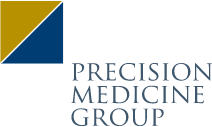The devil is in the details: Drilling down your audience

An inside look into INFLECTIONeffect’s superior audience targeting capabilities with Pam Caputo, Associate VP of Media & Engagement.
This blog is part of a series on our new data-driven platform, INFLECTIONeffect.
A great campaign, email, or social media post won’t generate business results if the right users don’t see it. When it comes to bringing new therapies to market, being able to reach and market to the appropriate HCPs and patients is key to driving adoption and changing the standard of care.
How do you ensure you’re getting your message in front of the right audience? How and where should you place your message? Our Associate VP of Media & Engagement, Pam Caputo, shares the answers to these questions and more, including how our new INFLECTIONeffect approach is making audience profiling more effective than ever.
- What are the most common mistakes you see marketers make when it comes to identifying their target audience? What are the unique challenges of audience targeting for healthcare and pharma?
One of the most common mistakes I see healthcare and pharmaceutical marketers make is focusing too broadly on their audience and treating all HCPs as if they are the same. For example, what kinds of HCPs are you looking to target? Oncologists, primary care physicians? That’s a good place to start, but from there, we need to drill down further. Which HCPs are early tech adopters? Which HCPs dive deep into the content shared versus which HCPs will just skim? People are defined by more than their jobs and their specialty; you need to get in the mindset of who they are and how they go about their day.
Similarly, healthcare and pharma brands have the tried-and-true traditional channels deeply etched in their marketing vision. We regularly work with clients to dispel the belief that you must be in every journal or participate in every conference. Just because that’s what’s worked before doesn’t mean that every HCP feels the same way or hasn’t evolved their media consumption habits – especially in the wake of 2020. Think outside the box! - How does INFLECTIONeffect help address these challenges?
INFLECTIONeffect helps healthcare and pharmaceutical marketers avoid these pitfalls by leveraging data at each stage of a commercial plan to align audiences, behaviors, and marketing channels.
When it comes to audience profiling, INFLECTIONeffect clearly outlines what channels HCPs value and the overall reach. This alone is instrumental in helping marketers think outside the box and adopt new mediums where it makes sense. We have over 50 channels measured, giving us more detail than any other research currently available.
Fundamentally, what INFLECTIONeffect gives us is a more holistic view of all the channels an HCP interacts with on a regular basis. This helps us align our strategic objectives to the channels we know have the highest consumption and drill down into more detail what channels will work best for a specific message. - Prior to INFLECTIONeffect, how did brands go about creating an audience profile and targeting?
Previously, we relied on qualitative and quantitative research to create audience profiles. We’d conduct activities like focus groups to get a better understanding of our audience. The sales reps also have traditionally been helpful in this process, sharing anecdotal insights they hear from physicians during their in-person meetings.
While market research remains incredibly important and valuable, there’s two major drawbacks to relying on this approach alone. First, traditional methods have not typically assessed how differently we (should) interact with different physicians. We’d look at things like the habits of “that type of person.” We didn’t always have the insights to support communicating in new mediums.
The way a brand interacts with a physician is multilayered and the audience strategy should account for this. You need to consider the broader landscape of all commercial elements and find the best mix of platforms and messages for a true omnichannel approach across owned, earned and paid channels. - Once the strategy is in place, how do you know your efforts are working?
One of the best parts about INFLECTIONeffect is that it’s fluid; we can see how tactics are performing along the therapeutics journey at a fast and frequent cadence.
All of these metrics, data, and insights help us stay informed on our next best action. We’re constantly thinking through how the beginning – i.e., our media tactics – relate to the end goal. - With talk of cookies and other user information disappearing in the near future, where do you see the industry headed as it relates to audience targeting?
As it relates to our agency’s work, healthcare and pharmaceuticals is a regulated environment, so we haven’t been relying on third-party cookies for targeting. However, the end of cookies does demonstrate how having the ability to own and harness first-party data is critical; that’s how we prefer to work and why we’ve brought INFLECTIONeffect to our agency suite.
At large, I think the industry will face interruptions related to re-targeting and will have to think through what a real digital conversion looks like and how it is measured. While not every data point is disappearing, I do think there will be a change in the way we look at analytics and KPIs.
I think it’s important not to let the headlines distract from reality. Digital advertising is a multi-billion dollar industry, it’s not going away anytime soon. There will be new solutions, we just have to wait for the dust to settle for a short time.
Learn more about INFLECTIONeffect and hear more insights from Pam Caputo during This Medical Moment.










